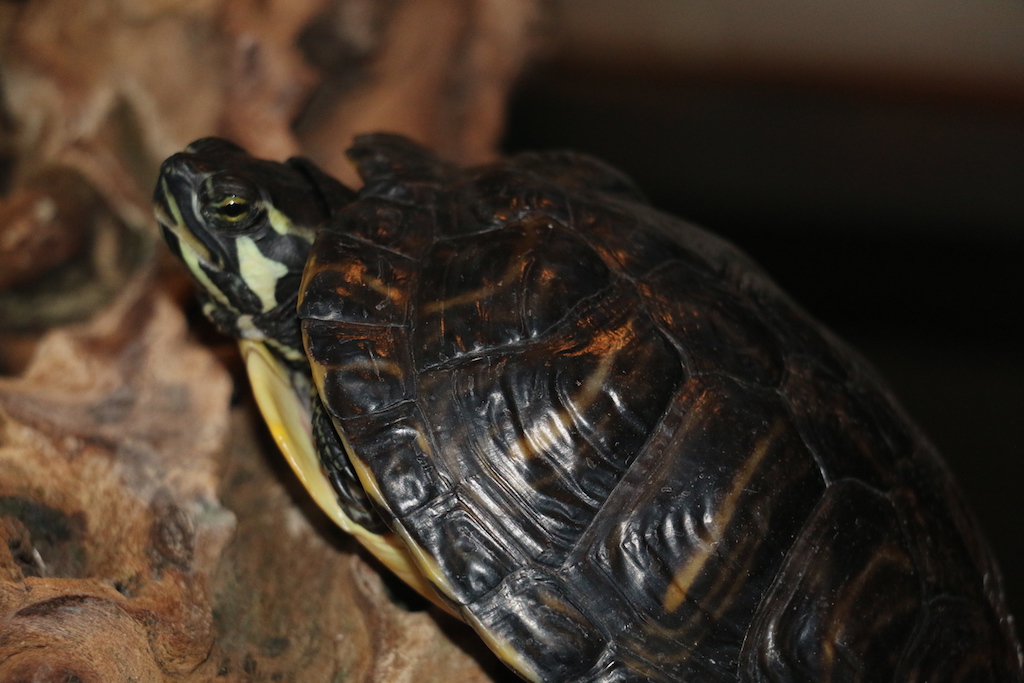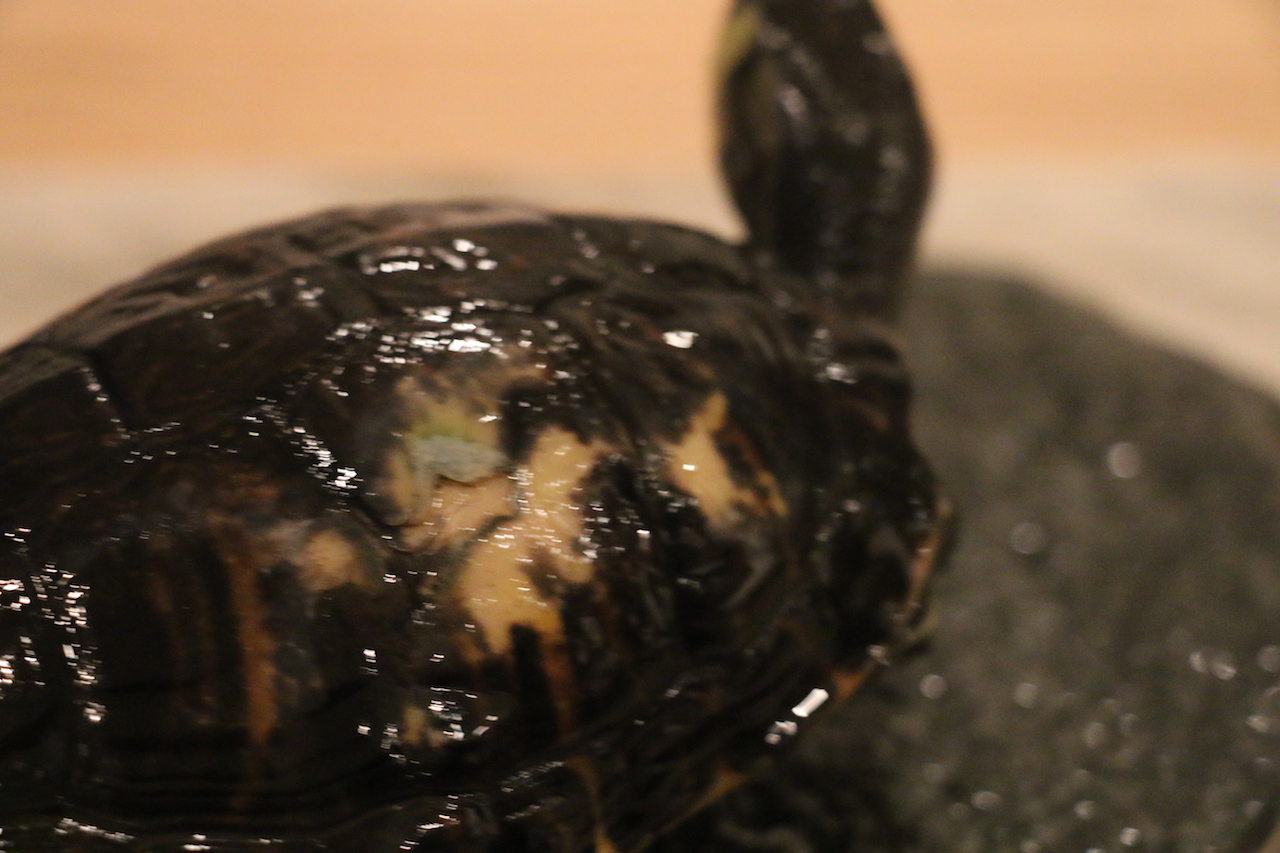HABITAT - PALUDARIUM
Paludarium
It goes without saying that an aquatic turtle needs water – the name says it all. However, turtles are reptiles and need land as well. The ideal habitat for a captive turtle is not an aquarium (a tank with water) but a paludarium (a tank with water and an island). Although you can buy a paludarium, a little creativity is all you need to create your turtle’s home. Pay close attention to the following elements.
Protection against diseases
Turtles are very sensitive to draughts. Your turtle’s enclosure must be partially closed at the top to help to prevent diseases – the standard tends to be around 50%. In addition, the ambient temperature should be at least 2°C warmer than the temperature of the water. This offers optimal protection against diseases.
Wall
Because turtles are very good climbers, the wall of the paludarium should be sufficiently high: a height of about 40 to 50 cm is ideal. Be careful not to turn the wall of your paludarium into a climbing wall! Features which provide grip, such as gauze or rock, are therefore not a good idea. It’s better to opt for a wooden wall or concrete slabs, for example. In addition, you should make sure that the wall slopes slightly inwards: this will ensure that your pet cannot escape.
Soil covering
Dirty?
You often hear that soil covering collects dirt which means that your water needs to be changed much more quickly. However, if you feed your turtle the right amount of food, there won’t be any dirt! The turtle will eat dead food before it has a chance to mix with the soil covering. Although living food may crawl into the sand, your turtle will dig up most of this food afterwards. This digging also helps to filter the soil covering.
Sand and/or pebbles
You can choose sand, pebbles or a combination of the two for your soil covering. The latter is closest to your turtle’s natural habitat. If you opt for pebbles, choose smooth pebbles: your turtle will enjoy digging in them in search of food. If you choose sand, then it’s best to opt for reptile sand, aquarium sand or play sand. This sand has been treated to protect against fungal growth, insects and harmful substances. What’s more, the grains of this sand are round, not sharp. You can also use grout sand, river sand or masonry sand. Even with sand, turtles like to dig into the soil covering in search of food; some turtle species also dig themselves into the sand and thus prefer a thick layer of sand.
Which is best? That’s a very personal choice and depends primarily on your preferences. Make your own choice after considering the various soil coverings available.
Plants
Perhaps you’d like some plants in your paludarium? They can create a beautiful and exotic environment inside your turtle’s home. What’s more, your turtle may choose to hide behind these plants. However, it’s not easy to keep plants in a turtle’s habitat. Turtles are omnivores so they’ll be only too pleased to eat any plants. Consequently, it’s not a good idea to keep real plants in your paludarium. More importantly, many plants are poisonous to your turtle, so if you do opt for real plants, buy them in a pet shop and don’t pick them from your garden. Of course, fake plants are also an option and your turtle will not see them as a delicacy. However, even fake plants can be difficult to maintain: if your turtle swims a little too energetically, plants can be uprooted.
Entry-level model
We think Tetra’s ReptoAquaSet is the ideal entry-level model for anyone looking for a ready-made solution.
This aqua-terrarium contains a powerful triple filter which removes dirt and prevents water discolouration and unpleasant odours and features LED lighting and a textured island for optimal grip when your turtle climbs up to find a dry resting place. In addition, the set also includes food and other products which have been specially developed for young turtles to ensure a balanced diet and for safe treatment of tap water. Your turtle can spend the first few years of its life here. Buy this set via the link below.
Other good models
The Jamaica turtle tank by Ferplast is made from sturdy float glass and is available in different sizes. We’re fans of the tank measuring 80 cm long and 40 cm high – it’s sure to give your turtle enough space to swim. Ciano’s paludariums are also highly recommended. This one is also about 80 cm long and it features an island, the perfect place for your turtle to sunbathe and rest.
Paludariums to be avoided
You’ll find lots of turtle tanks on the market which are suitable for a very young turtle to live in for a while. However, these tanks will soon be far too small for your turtle: avoid them. As you can see, these tanks do have a small island but they don’t contain enough water for your turtle to be able to swim around comfortably.


